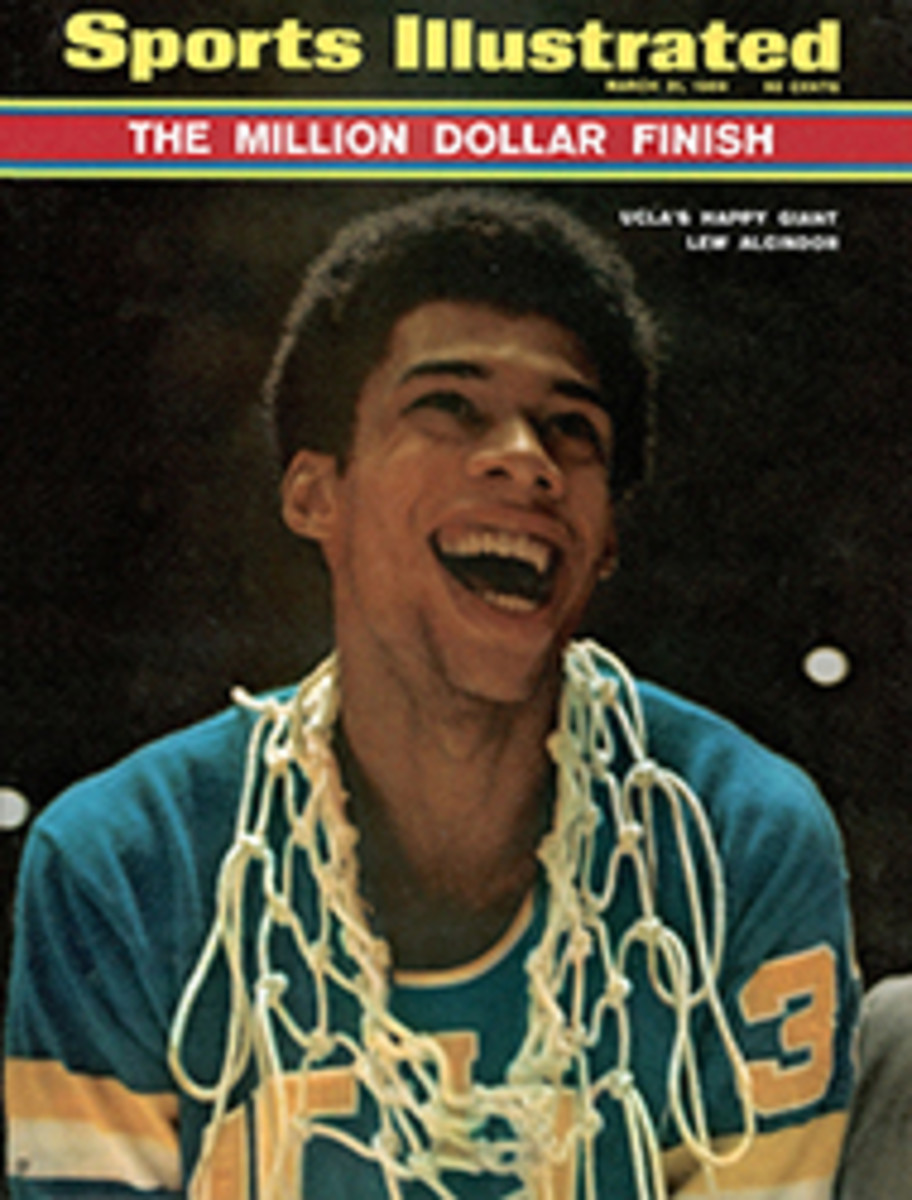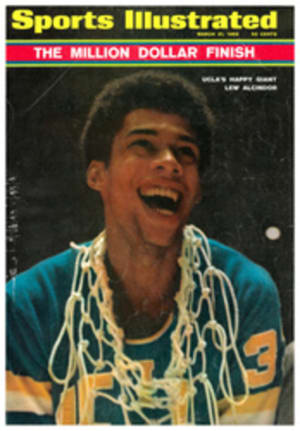
THE OLD BOYS ARE STILL BEST
When their college days are over, All-America lacrosse players cannot look forward to cash bonuses—there is no professional version of the sport. But that doesn't mean they quit. Since the 1920s vast numbers have joined the Mount Washington (amateur) Lacrosse Club, the pride of Baltimore and one of the most successful athletic dynasties in history. Although many of its players are in their 30s and pursuing nonsports careers, Mount Washington has won 94 games and lost only eight in the past 10 years in competition against the top college and club teams. In 14 seasons since 1935 it has been undefeated. As the scenes on the following pages show, it is a sporting phenomenon.
A CROWD OF ALL-AMERICAS DASHING THROUGH THE SNOW
The Most Valuable Player on the best lacrosse team in the land—selected each year by vote of his teammates—gets a drinking cup with his name engraved on it. The gesture is representative of the amateur quality of the Mount Washington operation. "This club is the antithesis of professional sport," says Ben Goertemiller, the blond, square-jawed lawyer who has coached the team for the past seven years. "In the pros both time and money are provided. Around here the only thing provided is a chance to play. The only compensation is the spirit of competing and the satisfaction of winning. A lot of our older players get banged around pretty well out there, but they come right back for more. I don't think you can find a better example of true dedication anywhere."
The scene in an empty Baltimore parking lot on a Sunday afternoon a few weeks ago bore out Goertemiller's words. Most of the city's population was huddled indoors reading the comics or watching the NBA Game of the Week while a cold, wet snowfall made the streets miserable. In the parking lot a crowd of former All-Americas, wearing sweat suits, full pads and sneakers, were passing, shooting and running over the snow and through the puddles like a bunch of fraternity boys on the front lawn in June. TV, the funnies, Sunday dinner would all have to wait: Mount Washington's opening game with the University of Maryland was only three weeks away and these were among the few hours in the week that the doctors, lawyers, stockbrokers, bankers and advertising men who make up the team could all get together for practice. (After the season starts workouts are held Tuesday and Thursday nights as well.)
This kind of thing has been going on since 1906, the year Mount Washington decided to stop fooling around with a number of other games and concentrate on lacrosse. (By no coincidence, it was about the time that Baltimore began to consider itself the sport's world capital.) Even the record-keeping has been purely amateur—no one really knows how many games the club has won and lost over the years. The most educated guess is that since 1925 the record is 358-31, with three ties. From 1938 to 1954, when W. Oster (Kid) Norris was coach, the record was 144-13-1.
Still, the club's only monument is this casual collection of figures—no golden dome or multithousand-seat stadium. Along the Jones Falls Expressway in northwest Baltimore there is a modest clubhouse, but don't try to find it without precise directions. The walls of the team's dressing room are cinder block, not tile, and there is no sauna, whirlpool or wall-to-wall carpeting. A hand-lettered sign taped to the equipment room door says: TAPE WILL BE PROVIDED ONLY FOR GAMES. FOR PRACTICE, 25¢ A ROLL. Players bring their own sticks and shoes. The club provides helmets, shoulder pads and blue-and-gold game jerseys, and when the team goes on the road the drivers get their expenses paid by the club. Mount Washington supports itself solely through gate receipts from its home games, and prices vary according to the competition. The big game with Hopkins might bring $2.50 a ticket.
Jerry Schnydman, a 24-year-old advertising man who was an All-America at Hopkins despite his size (5'1", 150 pounds), experienced a typical reaction when he joined the club. "When I first came out, I couldn't believe the desire and determination these players had," he says. "They're guys with families, just getting together for the fun of it. But if they don't win they don't have any fun. When these guys lose—God, they can't believe it. It just kills them."
"Last year against Rutgers we were behind 9-3 at the half," Goertemiller recalls, "and six goals is a lot of goals. They had us all disorganized. But nobody panicked. At halftime we just talked things over and reminded each other about what we knew we could do. Then the guys went out for the second half. We beat Rutgers 15-13."
Mount Washington wins its games with finesse—in stickwork and tactics—and its style is ball control, a product of necessity as much as design. When the team gains possession of the ball and flees into the attacking zone, it will usually slow things down—to set somebody up, of course, but also to rest the defensemen who have been under attack at the other end of the field. Says Goertemiller, "When the game's in the third quarter and one of our older players gets flattened by some big 19-year-old from Navy, we've got to give him a chance to catch his breath."
Since Mount Washington practically has its pick of All-Americas, the roster through the years reads like a Hall of Fame, from Bill Schmeisser and Phil Lamb of the early days, to Cas Wylie and Kid Norris, to current players like Jim (Hy) Levasseur and the Seivold brothers, Joe and Al. Jim Kappler, the goalie, was one of the finest ever to play the game. "Jim retired a few years ago, but he came back last season," says Goertemiller. "The team was in trouble and needed him. It's pretty tough to retire, you know, because winning can be so much fun. My toughest job as coach is keeping these fellows from getting overconfident. But I can see their point—when they go out there they know they're the best there is, and they know the other team knows it too!"
TWO PHOTOS
ROY DE CARAVA
Warming up—gently—before a game, Jim Kappler plays catch with his son John. Above, Al Seivold (18) is about to score against Rutgers in another Mount victory.
TWO PHOTOS
ROY DE CARAVA
When Mount Washington leaves the field at halftime, the players' sons and other kid admirers take over and make like All-Americas, minus the regalia shown above.
PHOTO
ROY DE CARAVA
In the team's clubhouse Ben Goertemiller—a full-time lawyer and part-time coach—discusses strategy with his veteran players.
PHOTO
ROY DE CARAVA
Matches and practice sessions bring out the team families, and many wives, like Mrs. Goertemiller (far right), are expert viewers.
TWO PHOTOS
ROY DE CARAVA
That is no spy eavesdropping on Mount Washington's huddle, it is Al Seivold's son, learning the game from the ground up. At a recent club dinner dance, player Herb Better is a smooth performer.

